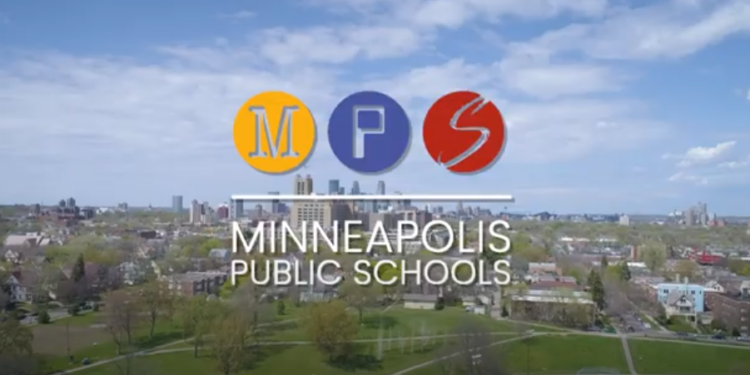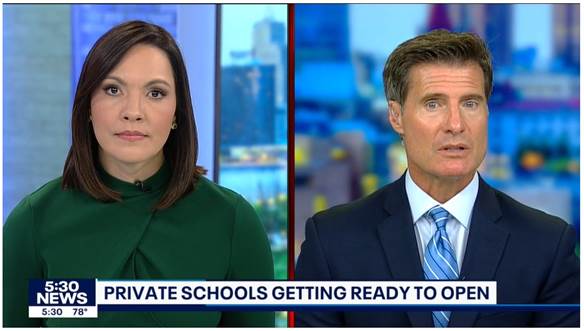Recently, Minneapolis Public Schools passed a new “Gender Inclusion Policy.” At its core, the new rules highlight both the reality that there is no such thing as a “values-neutral education” and the desperate need for school choice.
For too long, Americans have operated under the false belief that simply because we call something public education and it is run by the government, that it is neutral or unbiased.
Just like everything else in life, the process of education is limited by time and resources. There are only so many hours in the day to educate a student. Because of those limits, schools and teachers must decide how to fill that time: Which topics will be covered? How will they be covered? Which subjects won’t be covered?
The answers to those questions are based on the biases and beliefs of state bureaucrats, school administrators, and teachers. What they believe is important is what will be taught and emphasized to the students.
If you’re trapped in a public-school monopoly, your student will be at the mercy of those biases. If you have the financial resources to choose the best school for your student, then you can find a classroom setting that better matches your family’s values and beliefs.
The reality that there is no “values-neutral education” emphasizes the need for school choice with Education Savings Accounts. While the state has an interest in making sure students are educated in core subjects, those students do not belong to the state but rather the family. After all, who brought the child in to the world? Who loved and provided for the child well before he went off to school? The family – not the school, teachers, administrators, state education bureaucrats, or legislators – is to whom the child belongs.
Shouldn’t families therefore be in the driver’s seat of their children’s education? Or are we supposed to hand over our children to have their values shaped and molded by strangers running the education system?
Let’s consider Minneapolis Public Schools (MPS) a little more thoroughly in light of those questions.
MPS’ new Gender Inclusion Policy states the following:
The students and staff of Minneapolis Public Schools (MPS) deserve respectful and inclusive learning environments that value students’ gender identity and gender expression. MPS (‘District’) ensures that all students have access to programming and facilities in which they feel comfortable, supported, and safe. This policy addresses the inequities some students, including intersex, transgender, two-spirit, gender expansive, non-binary, and gender-questioning students, confront as they navigate a system designed using a gender binary model.
In their own document, the board of Minneapolis Public Schools admits they operate in a system designed with certain biases. In this case, they were operating under “a gender binary model” and now they’re changing to a gender-fluid model.
As part of the change, a student of any grade “has the right to be referred to at school by a name and pronouns that align with their gender identity.” Effectively, the policy is written in such a way that any student of any grade can demand that everyone in the school uses that student’s chosen gender identity, updated name, and updated pronouns.
The policy isn’t clear if the views of fellow students, teachers, or administrators who hold traditional, gender-binary views will be respected, nor what punishments may result for not obeying the desires of the transitioning student.
Additionally, according to MPS the student also has the right to use any facility (bathroom, locker room, etc.) that matchers that student’s gender identity. The student also has the right to join any organization or athletic team based on the chosen gender-identity. In other words, a 16-year-old biological male can identify as a girl and use the girls’ locker room and bathrooms, join girls’ sports, and even travel with girls on school-sponsored outings.
For some individuals, this change is great, and they whole-heartedly support it. For parents and students who disagree, what are they supposed to do?
If they’re trapped due to finances or other realities within the Minneapolis school district, should they have to send their children to a school that is teaching their children the polar-opposite of the family’s beliefs and values? If the parents of daughters are worried that a biological male will be sharing the girls’ restroom, what do they do? After all, the gender-fluid student has the right to do so per MPS.
A lot of energy has and will be spent on what many would consider a very ideologically divisive policy. The biases and beliefs of MPS administrators and board members have chosen this path while utterly failing to teach the basics.
Below is a top-level chart of reading and math proficiency in Minneapolis Public Schools. As you can see, as of 2023 only 41% of MPS students are proficient in reading and a mere 35% are proficient in math.

Since “all students” includes kids from every grade, we can give some leeway to MPS. Perhaps the school district can take kids from low proficiency rates in earlier grades to much higher rates by the middle of high school.
Below is Minnesota Department of Education’s assessment of reading proficiency in 2023 for 10th-grade students in MPS, broken down by race.

In MPS, 46% of all high school sophomores were proficient in reading. But when looked at by race, a very ugly achievement gap between whites and students of color becomes apparent. Only 22% of Black students and 23% of Hispanic students are proficient in reading by 10th-grade. That’s only 1 in 5 Black or Hispanic students.
Minnesota Department of Education’s assessment of Minneapolis’ math proficiency in 11th-grade is even more troubling than the reading proficiency assessment. Below is the chart of math proficiency for you to reference.

Yes, you are reading that correctly. In Minneapolis, only 7% of Black students, 8% of Hispanic students, and 6% of American Indian students in 11th-grade are proficient in math. Meanwhile, 53% of White students are proficient. Again, that’s an enormous achievement gap.
If you’re a parent looking at Minneapolis Public Schools, you may or may not believe the new Gender Inclusion Policy is the right thing to do. Whatever your position, though, you cannot ignore the reality that while energy and resources are being poured into the new Gender Inclusion Policy, the core subjects of reading and math seem to be horribly neglected in a district that spends roughly $30,000 per student per year.
Again, the situation in Minneapolis is another glaring example of the need for school choice. When a district is spending energy on divisive issues while failing at its core duties, should we keep families and students trapped in such a system?
Parents in Minneapolis – and across Minnesota – should have the freedom and resources to find the right school for their kids. Only Education Savings Accounts make that possible by taking $7,000 in state funds already allocated to the student and enabling the student to take those funds to the school that best matches the family’s values.
If you don’t care about reading and math while also believing gender inclusion is where energy should be spent, then Minneapolis Public Schools is the district for your family.
On the other hand, if you live in Minneapolis and care about your child learning reading, writing, and math, particularly if you’re Black, Hispanic, Asian, or American Indian, then you need school choice through Education Savings Accounts.
—
Image Credit: Minneapolis Public Schools YouTube













